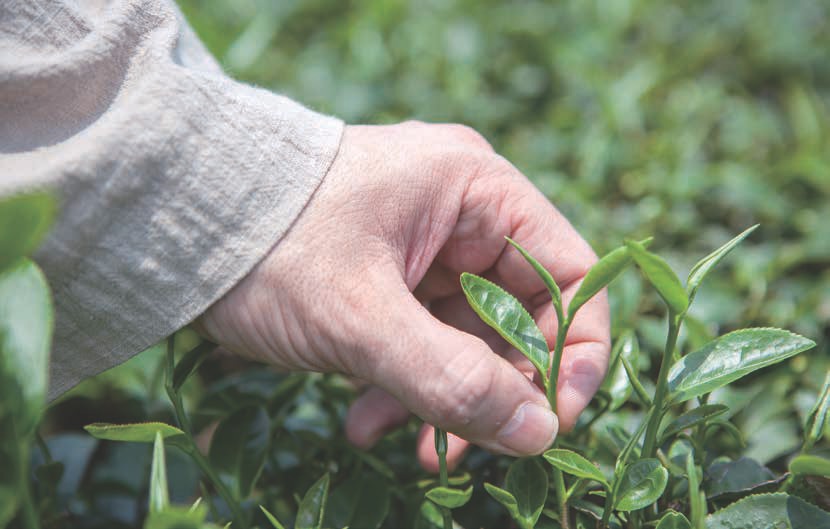
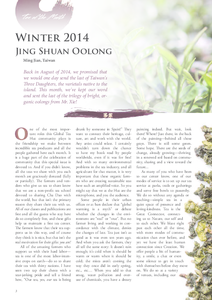 |
|
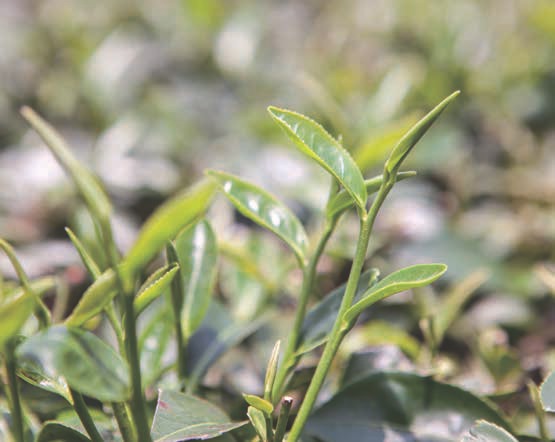
One of the most important roles this Global Tea Hut community plays is the friendship we make between incredible tea producers and all the people gathered here each month. It is a huge part of the celebration of community that this special issue is devoted to. And if you didn't know, all the teas we share with you each month are graciously donated (fully or partially). The farmers and vendors who give us tea to share know that we are a non-profit tea school devoted to sharing Cha Dao with the world, but that isn't the primary reason they share their tea with us. All of our classes and publications are free and all the guests who stay here do so completely free, and these gifts help us maintain a free tea center. The farmers know that their tea supports us in this way, and of course they think it is nice, but that isn't the real motivation for their gifts: you are!
All of the amazing farmers who support us with their hard labor - tea is one of the most labor-intensive crops on earth - do so to share their tea with thirty nations. I have seen two tap their chests with a tear-jerking pride and tell a friend how, "Our tea, yes, our tea is being drunk by someone in Spain!" They want to connect their heritage, culture, art and work with the world. Any artist could relate. I certainly wouldn't turn down the chance to have my book read by people worldwide, even if it was for free! And with so many environmental problems in the tea industry, and all agriculture for that matter, it is very important that these organic farmers who are creating sustainable teas have such an amplified voice. So you might say that we at the Hut are the microphone, and you the audience.
Some people in their urban offices or at bars declare that "global warming is a myth" or debate whether the changes in the environment are "real" or "true". But no farmer living and working in concordance with the climate, denies the changes of late. Tea just isn't as good as it was even ten years ago. And when you ask the farmers, they all tell the same story: It doesn't rain enough; it's cold when it should be warm or warm when it should be cold; the mists aren't coming the way they once did in early spring, etc., etc... When you add to that smog, water pollution and overuse of chemicals, you have a dreary painting indeed. But wait, look there! Where? Just there, in the back of the painting - behind all those grays. There is still some green. Some hope. There are the seeds of change, already growing - thriving in a renewed soil based on community, sharing and a view toward the future...
As many of you who have been to our center know, one of our modes of service is to set up our tea service at parks, trails or gatherings and serve free bowls to passersby. We do so without any agenda or teaching - simple tea in a quiet space of presence and loving-kindness. Tea is the Great Connector, connecting us to Nature, our self and to each other. We blaze right past each other all the time, with more modes of communication than ever before, and yet we have the least human connection since Creation. We offer people a bit of humanity, a smile, a chat or even some silence to get in touch with themselves before they move on. We do so at a variety of venues, including our monthly service at Hope Market in Taichung.
Hope is a group of organic producers who work together as a model for a sustainable future. It is mostly farmers, though there are producers of recycled clothes, jam, miso, etc. They hold activities every week, including courses conducted by various farmers in which the public can come and learn to make tofu, honey, organic fertilizer, etc. There is no currency exchange allowed within the Hope organization, rather trade and barter. If a soybean farmer wants some honey, he trades tofu for it. There is also a wonderful exchange of work as well, which means if that same soybean farmer needs some help harvesting he asks his brothers and sisters in Hope and they all come to help, knowing that he will also help them if and when they need him to. It goes without saying that when the time comes they will also help us build our permanent center, Light Meets Life. Every month, Hope also holds a market in a beautiful garden, with rivers, koi fish and lotus ponds. As members, we have been given a permanent space in the market. We set up on the ground and serve tea to the guests that come to buy vegetables and other organic products. Next to sending out this Global Tea Hut, Hope Market is the highlight of our month here.
It was at Hope that we met the amazing Mr. Xie Yuan Zhai, whom we of course gravitated to immediately because of his organic tea. He came to the center a few times and we started visiting his farm. It was so easy for a friendship to develop (organically of course)! He is kind and joyous, with smiles that fill a room, not to mention incredibly knowledgeable about Tea. He's made every kind of tea you could imagine at some point, and has decades of experience.
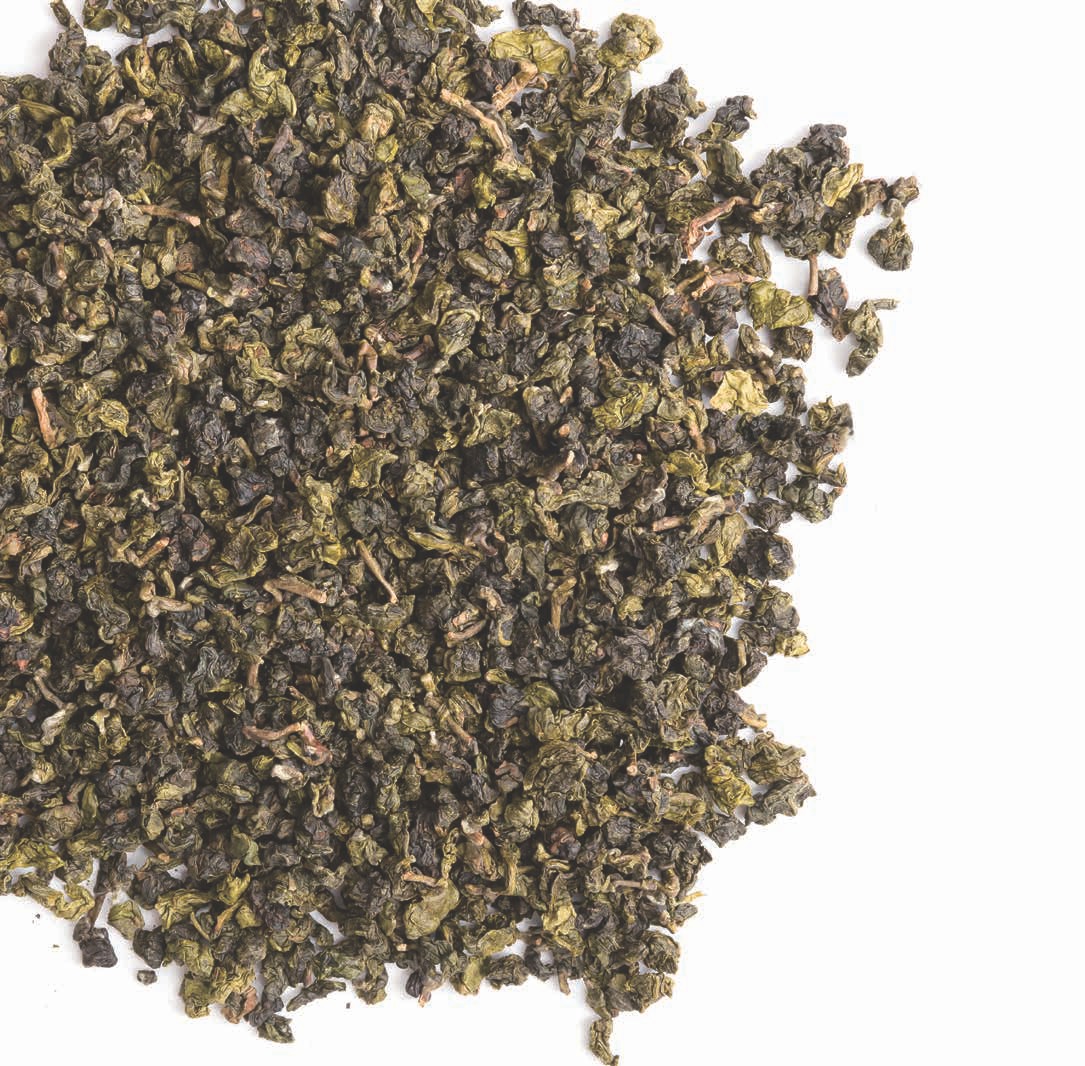
Kingfisher Jade (Tsui Yu) oolong is a hybrid which came to life in the 1970's, after decades of research. In the Taiwanese index it is TW #13, though farmers often refer to it as "2029" or just "29". Like Jing Shuan, the leaves of Tsui Yu have veins at 80 to 90-degree angles, though they are long and arrowhead-shaped. When you stand back from a field of Tsui Yu, the leaves have a bluish-green (kingfisher) tint to them and they are more vibrant, with lusher foliage than all the other varietals. Tsui Yu dislikes cold weather, so it can't be grown at very high altitudes. It is predominantly grown on Mt. Zhu and in the lowlands around Ming Jian, where our tea of the month comes from. Tsui Yu has a flavor of seaweed, lima beans and often fruit. It is more famous for an aroma of wildflowers and an aftertaste of fresh fruit. Some say it tastes of lotus or lilac, others say cassia or peach. Much of this depends on the terroir, the season and the skill of the producer. The Qi is Yin, which centers you in the heart.
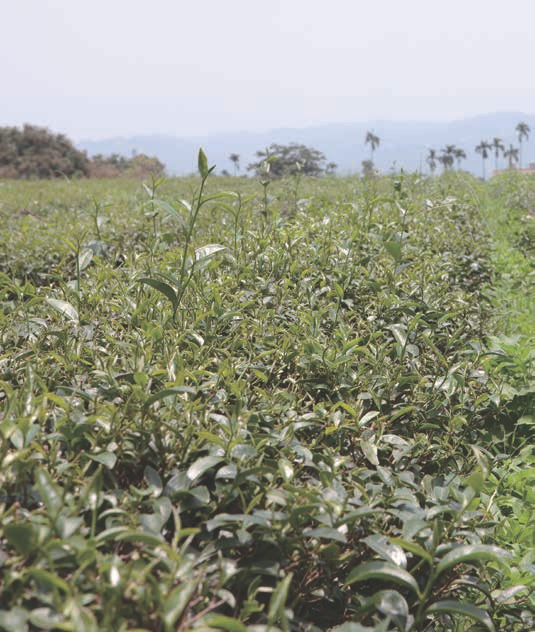
Mr. Xie is a third generation farmer in Ming Jian, Nantou, Central Taiwan. Ming Jian is lower altitude, in the foothills of the central mountain range. In the last few decades, such lower altitude tea has been adumbrated by the popularity of the teas grown higher up. Though areas like Hsinchu and Miao Li counties, where Eastern Beauty is grown, have struggled since high mountain oolongs have come to dominate the market, Ming Jian has prospered by providing lower-priced teas for export, or large-scale production for the bottled tea market (often called "Ready to Drink" RTD). Mr. Xie's family has grown small-scale productions of oolong tea through three lifetimes, since before the higher-altitude teas even existed.
When we discuss organic farming and the need to make changes in tea farming - as well as other kinds of agriculture - it's important to remember that the farmers are always the first victims. It is they who handle the agro-chemicals in large amounts, and most directly. Furthermore, it is only by humanizing and befriending them that we can bring about change. We must include rather than exclude - educate rather than ostracize.
Like so many other farmers, Mr. Xie started to get the nagging (coughing, wheezing) feeling that these chemicals were harmful to his family, his community and his land. When his wife almost miscarried their second child in 1997, he had had enough. Despite opposition from friends and family, Mr. Xie made a commitment to become an organic tea farmer, no matter the cost. He first attended some organic farming classes held by the MOA organization.
MOA stands for "Mokichi Okada Cultural Services Association International." It was created by Mokichi Okada (1882-1955), who started three great projects in his lifetime: a "Mokichi Style Detoxification Treatment" for land, "Natural Agriculture, Drinks and Food" and "Fine Arts and Culture". These three projects created affiliated groups of people with common goals to help each other. His overall aim was "to allow humanity to expand and flourish, helping create healthier people, families, regions, countries and culture". His Japanese NPO natural agriculture culture movement created the Da Ren farm in 1982, and then in 1991 developed standards for healthy, organic agriculture. They began to set up branches and create a social system for theory and practical cooperation amongst farmers in Japan.
In April of 1990, a group of people who cared about Nature and were concerned about environmental pollution wanted to change the situation in Taiwan. They joined the Japanese MOA International Association and created a sister organization to educate farmers and legally certify organic foods and drinks island wide. This Taiwanese foundation was formed to explore and promote health and happiness for mankind and to guarantee environmentally sustainable MOA natural agriculture, expecting this ideology and the sustainable agriculture techniques behind it to spread all over the world.
MOA certification is rather rigorous and they do a great job of ensuring sustainable, organic agriculture without much of the bureaucracy or financial interests that trouble a lot of organic certification worldwide. Watching for the MOA certification on teas is a good way to enter the world of organic Taiwanese teas.
From 1997 to 2000, Mr. Xie and his family struggled to maintain their principles. His tea was sub-par and he lost most all his customers. His father, who had been worried when he suggested upsetting the status quo in the first place, was very critical of his decisions. Organic farming is difficult, and it requires a radical change in farming and processing methodology - changes that would take time to learn. Rather than give up, as many would have done, Mr. Xie got a part time job as a painter and carpenter, working day and night - either painting or farming - to keep his family afloat. Finally, in the early 2000's, his acumen for organic farming improved to the point that he was able to take his teas to market again. Since then he has gone on to win awards, been featured on TV and has even heard his father, now a sprightly eighty years old, bragging to others about how his tea is organic and good for the environment!
Mr. Xie's work hasn't stopped with his own farm. He knew that he would have to keep improving his skills, creating new and better teas, and help show his neighbors the value of organic farming, especially since their land and his are close enough to influence each other. He formed a co-op with other farmers and began teaching locals to shift to organic methods, offering them equal shares in their combined enterprise. As more people have joined this local group, the incentive to do so has also increased. To date, more than twenty-five farmers in the Ming Jian region are organic, including Mr. Xie's immediate neighbors.
Mr. Xie's kind heart shows in his teas. He cares deeply about Tea and the Earth. He produces green tea, large and small-leaf red tea, as well as several kinds of oolong, and all with great skill. To us, he is an inspiration and a kind of hero - the kind not talked about enough these days. It's easy to follow the crowd, maintain the status quo; or to say, "I am just one person. What can I do?" It is difficult to face criticism from family and friends and stand up for what you believe to be right! The problem is that it is too easy for farmers to make more money with agro-chemicals, and to do it with less work. And that's also why so many of them are over-using the fertilizers and pesticides, reducing the average life of a tea bush to fifteen years, all in the name of personal gain. Many of them get cancer from improper exposure to such chemicals, themselves victims as we mentioned above. Mr. Xie is a man who has seen a different way, and more inspiringly, lived that way and taught others to do so. And that is the true spirit of Tea.
Aside from providing this month's tea, which you are sure to love, Mr. Xie is a very important part of the scenery at our center, and will be very important for many of you as well, because so many of our visitors come here with a curiosity about how tea is processed. It is very important to experience with your own hands just how difficult it is to make tea, so that in your own soreness you will develop a tremendous respect for the Leaf. This respect isn't just in the billions of years of evolution, or in the Nature we always wax poetic about: the wind and rain, sun and moonshine, minerals, mountain and water that flow from roots to crown. It is also in the blood, sweat and tears of generation after generation of farmers. And there is a deep reverence in seeing just how much mastery, skill and, dare we say, art that go into the crafting of the Leaf. And so, with great joy we take as many of our guests as possible to a few different farms to try their hands at tea processing. It is amazing to make your own tea, and take it home with you. If you didn't have enough reasons to come stay with us, here's another: Mr. Xie has formally invited each and every one of you to come to his farm and make tea, eat a nice lunch and take the tea you picked and crafted home with you!
Though you could perhaps call Si Ji Chun a hybrid, it is a natural, wild varietal that arose in Mu Zha. Since it is a natural varietal, it is heartier than the others. This is a testament to one of the principles we always promote in these pages when discussing what we call "Living Tea", which is that the leaves produced by man will never compare to Nature's. It's possible to further distinguish manmade teas by calling them "cultivars". Si Ji Chun trees yield buds at least four times a year, which is where its name comes from. "Si Ji Chun" might also be translated as "Four Seasons like spring", referring to the fact that this bush can produce as much in other seasons as in spring. It is also thought to be the youngest of the Three Daughters, coming into commercial production in the 1980's. Si Ji Chun does not have a Taiwan classification number, since it evolved naturally. Si Ji Chun is more closely related to Ching Shin than it is to Jing Shuan or Tsui Yu. The leaves of Si Ji Chun are round in shape, with veins that shoot off at 30-to 60-degree angles. The leaves have a light green hue. The buds of Si Ji Chun are often a gorgeous reddish hue when they emerge.
As many of you will remember from June of 2013, when we sent out this fabulous tea, Si Ji Chun has an exuberant, golden liquor that blossoms in a fresh, musky floweriness. It is tangy, with a slightly sour aftertaste, like the Tie Guan Yin varietal it evolved from. Many Taiwanese compare the aroma to gardenias. The Qi is cleansing, pushing outward from the center. It rises up in gusts, and leaves you feeling refreshed.
We have sent you the other of the "Three Daughters of Taiwan" in the past: Tsui Yu (Kingfisher Jade) and Si Ji Chun (Four Seasons Spring). Last August, we devoted a whole issue to the four main varietals of Taiwanese tea, and covered these Three Daughters in detail. That month, we sent you Tsui Yu, and promised that one day soon we would send out the last of the daughters, Jing Shuan (金 萱 烏 龍).
Jing Shuan oolong is a hybrid that was established in the 1970's. Its Taiwanese number is TW #12, though farmers often refer to it as "2027" or just "27". These numbers refer to the process the Taiwan Oolong Tea Research and Development used to classify the teas as they were developing and testing them. The leaves of Jing Shuan are more round while the branching veins come off the central vein at an almost right angle (80 to 90 degrees). From a distance, the bushes have a yellowish-green hue, which may also help distinguish this cultivar. Jing Shuan tea is primarily grown on Mt. Zhu in central Taiwan. It doesn't thrive in the extreme cold of very high altitude gardens or plantations like Ching Shin, but isn't as susceptible to cold as Tsui Yu. When it is healthy, Jing Shuan has more vibrant foliage than other varietals.
Jing Shuan is one of the easiest of the four main tea varietals to distinguish. The dry leaves have a golden, yellowish-green hue, as does the liquor. Jing Shuan is famous for its milky texture and fragrance - often referred to as "milk oolong". There is misinformation in the tea world that this name is due to using milk as fertilizer, but the name actually comes from the tea liquor itself: Jing Shuan is thick and creamy, and if the terroir is right, with more sun, and the processing done well, it has a definite milky aroma which is very pleasing. Its fame has resulted in fake "Milk oolongs" produced in Mainland China that are sprayed with artificial milk flavors post-production, giving them a strong and unnatural fragrance of milk. (Yuck!) Real Jing Shuan has only a subtle hint of a milky fragrance in the aftertaste. The thick, oily liquor coats the throat. It has a deep and lasting Qi that resonates inwards.
This milk oolong has beautiful, uplifting spring energy that enlivens you with a fresh, bright Yin Qi. It is a great tea to drink in the afternoon with some friends, as the new spring light comes in through the windows, starting a movement towards a new season of year. We know you will love this amazing oolong!

Like all oolong teas, Jing Shuan is best brewed gongfu. For those of you who have yet to foray into gongfu brewing, you can brew this tea in a bowl, by adding just a few balls of the tea and some water that is allowed to cool a bit after boiling. Oolong and gongfu tea brewing grew up together. Gongfu was born out of the same principles that inform martial arts, by Southern Chinese who primarily drank oolong tea. In brewing an oolong gongfu, we highlight its essence. This doesn't mean you have to feel obligated to do so, however.
It may be better to explore brewing this month's tea with a little lower temperature water - bringing the water only to Crab Eye sized bubbles, instead of the Fish Eye that we use for most teas. (You can also bring the water to Fish Eye and then let it cool a bit.) This amazing oolong can definitely withstand higher temperatures like Fish Eye, but it will produce a very different, light and fragrant liquor when brewed with slightly cooler water. It may be very interesting to separate your tea into two brews and try each one with different temperatures, exploring the difference a cooler and hotter brew has. Which one brings out the milky fragrance more and why?
If you are brewing gongfu style, you can also explore the relationship that pouring has on tea. Try pouring from a bit higher for green oolongs like this. Pouring from higher helps oxidize the water and cool it down a bit. Make sure to move in a circle, so you do not scald any one leaf. Another good practice is to work towards placing the water in the pot, as opposed to pouring it. The connection should not end at the kettle's handle or spout - you can flow into the teapot with the water and continue the connection, from heart to hand, kettle to pot to cup...
The first breath of Spring exhales the Golden Lilies of Winter's meditation. The sweet liquor of nascent flowers reminds us to savor the snow-swept fields. Dark and light, the Tea brews change - pots of the Timeless poured into cups of Time. In the darkest of Winter Shou And the light Spring Oolong, We, too, are drunk by this life of Tea.
